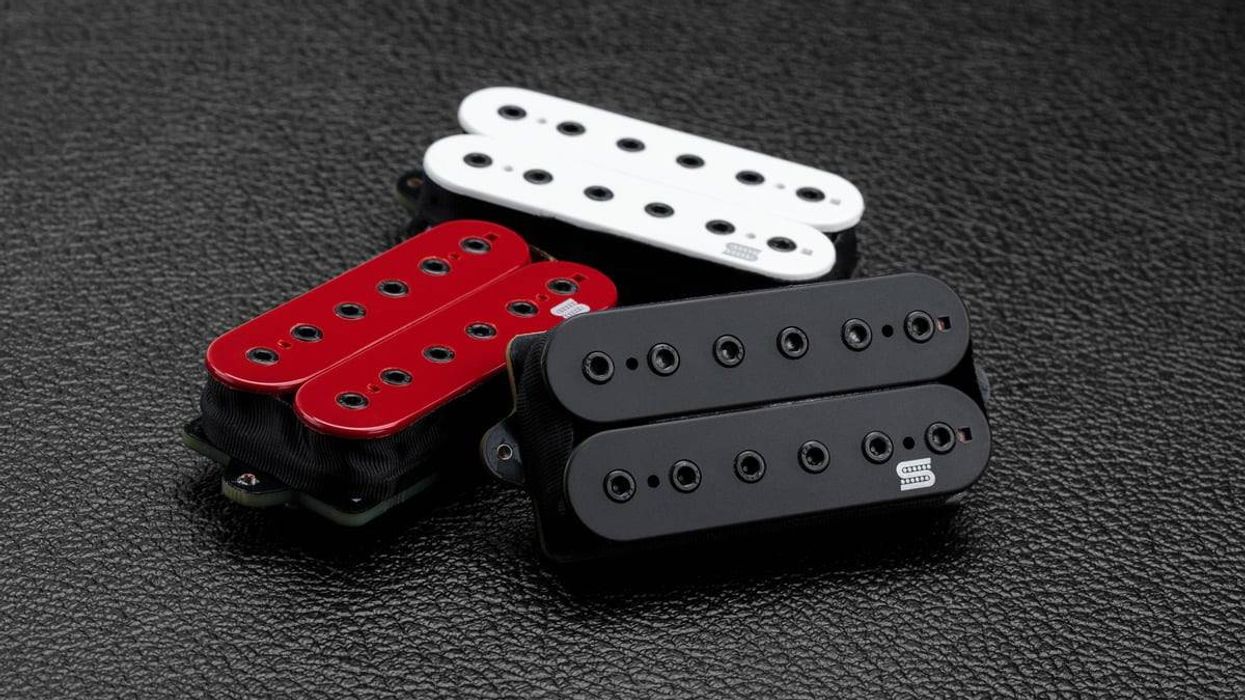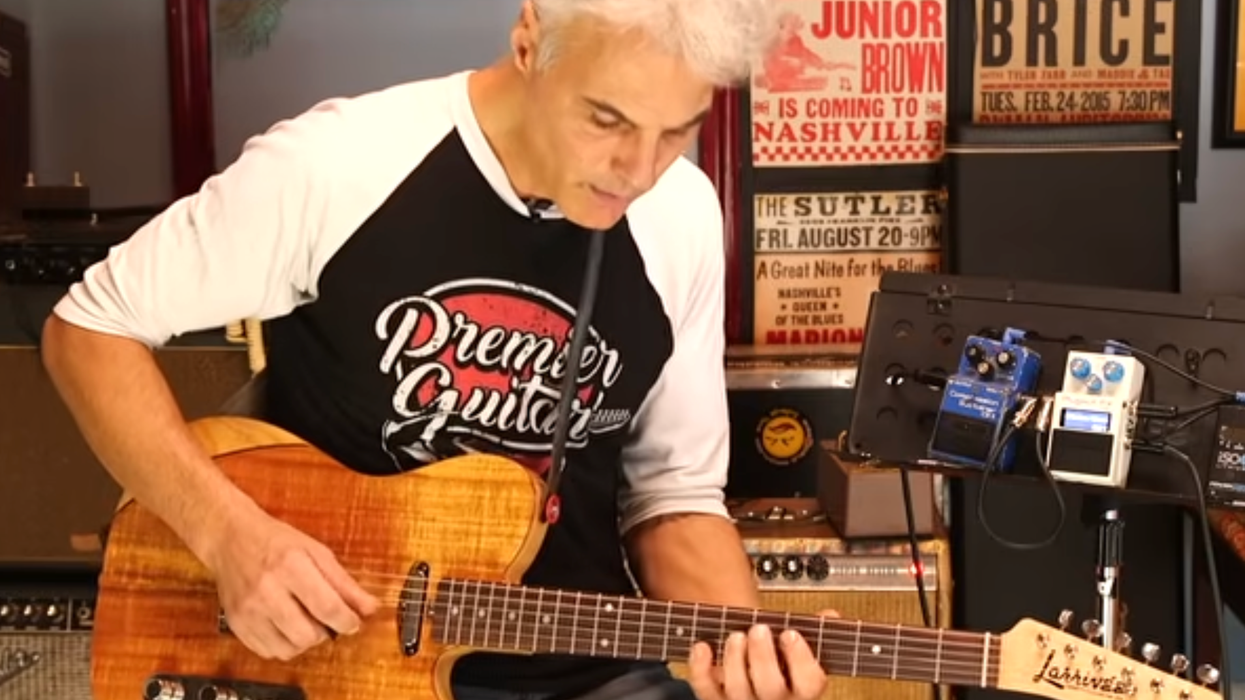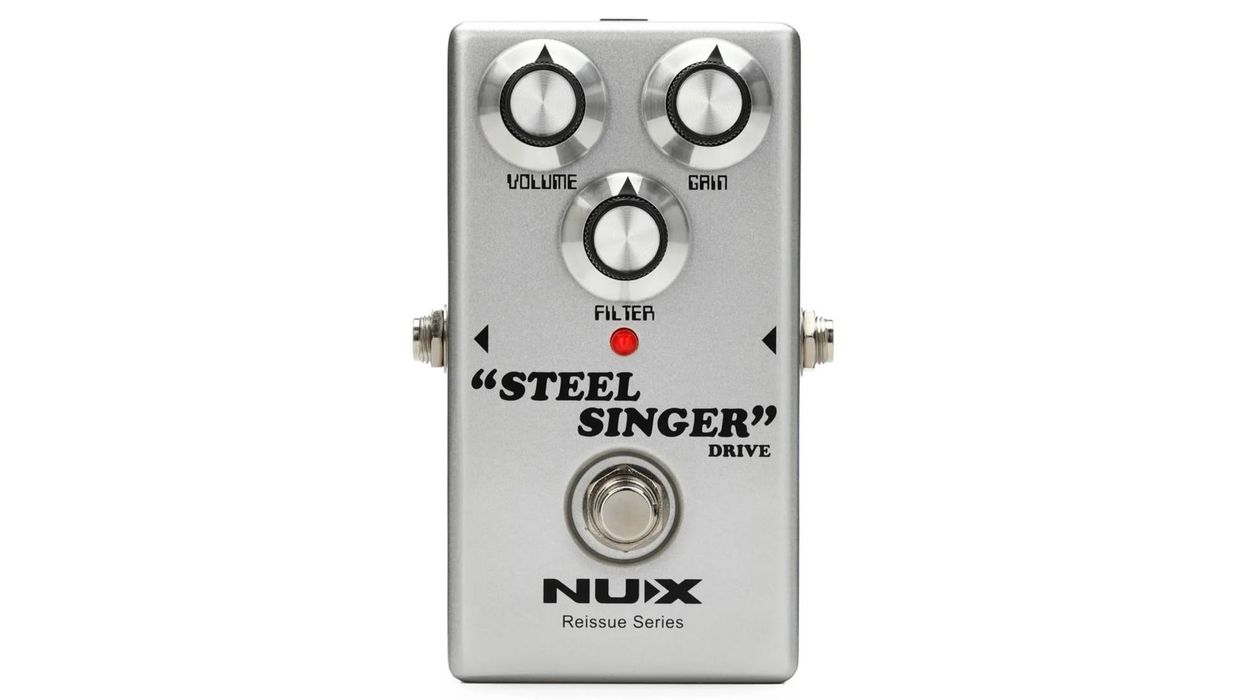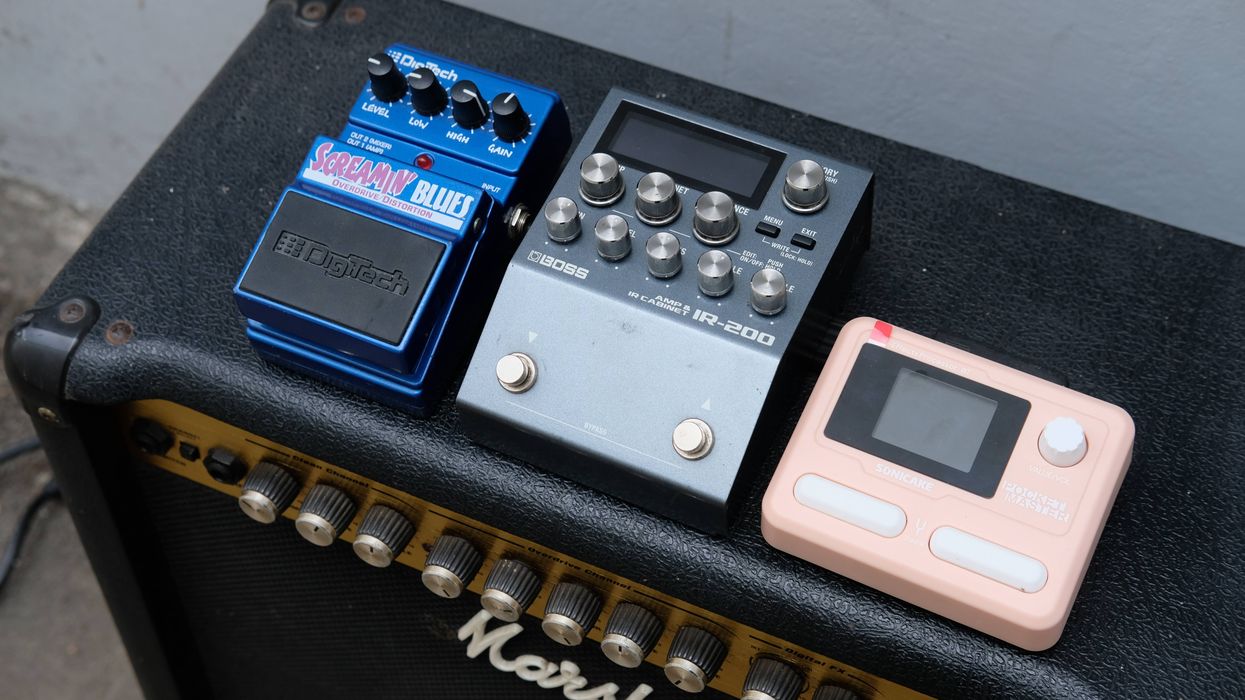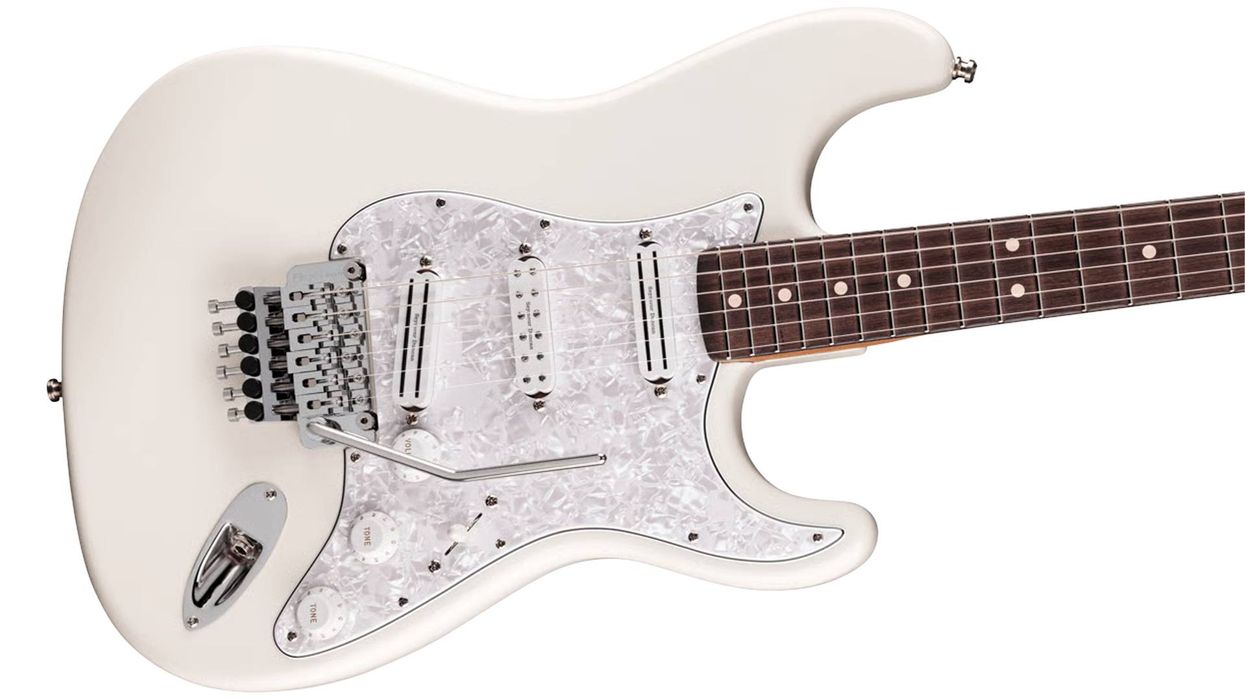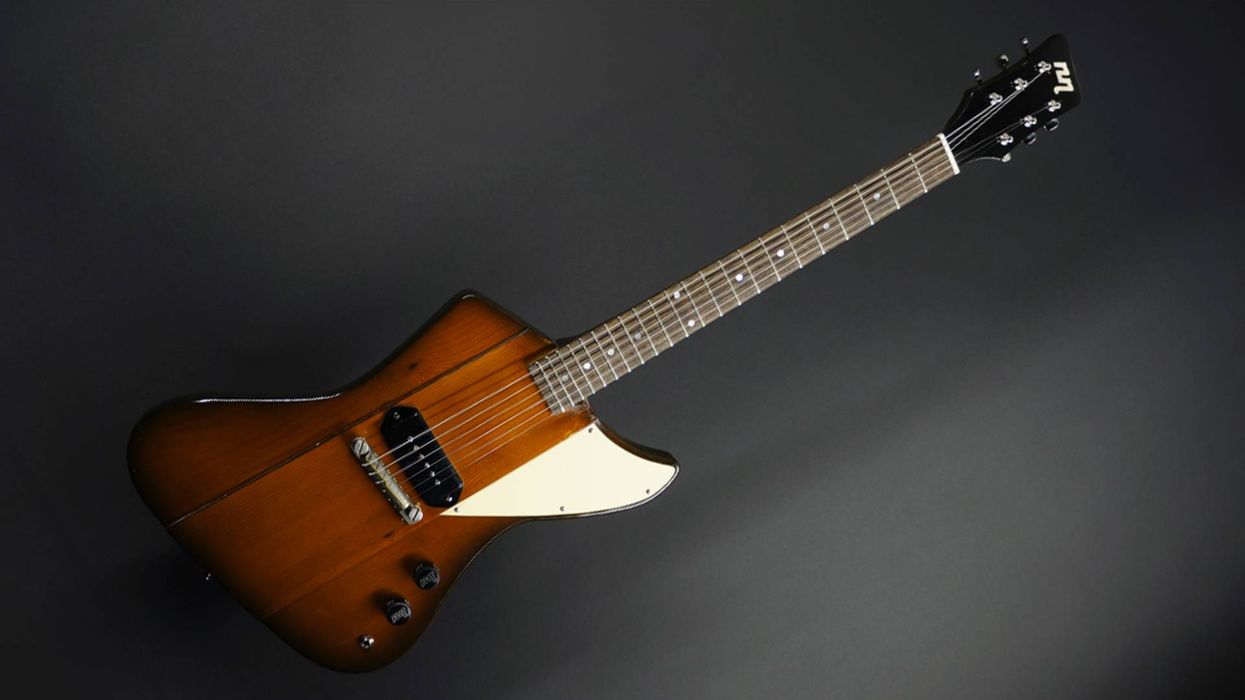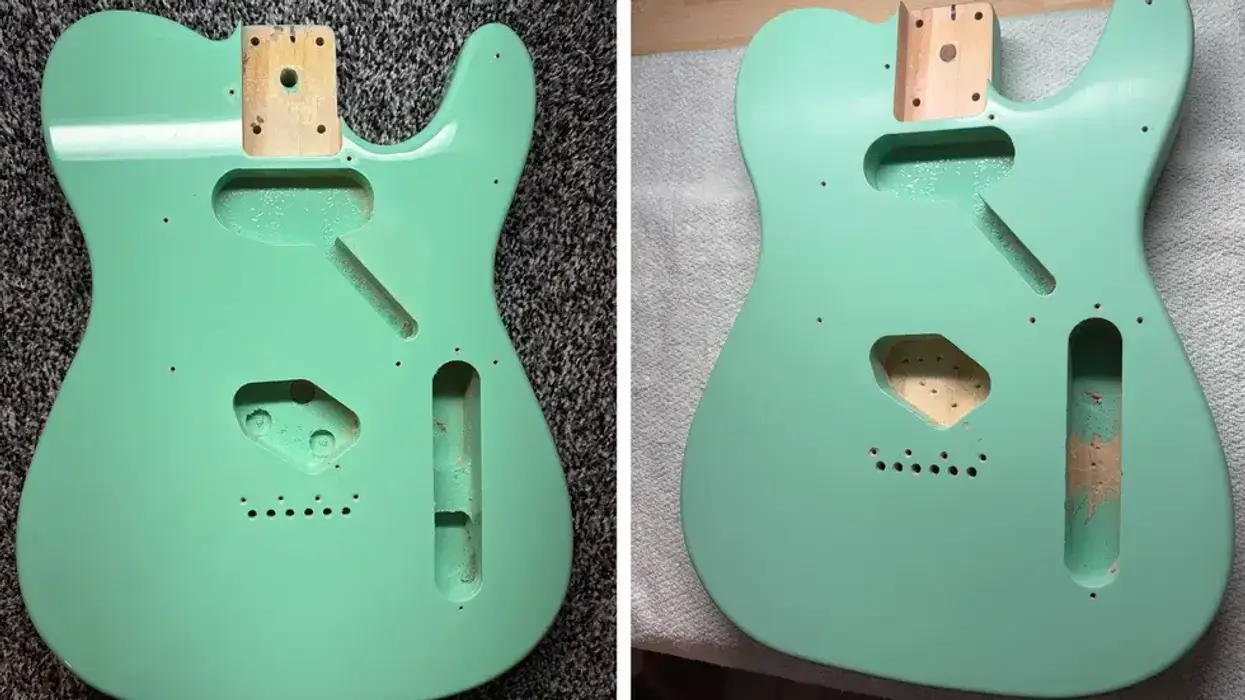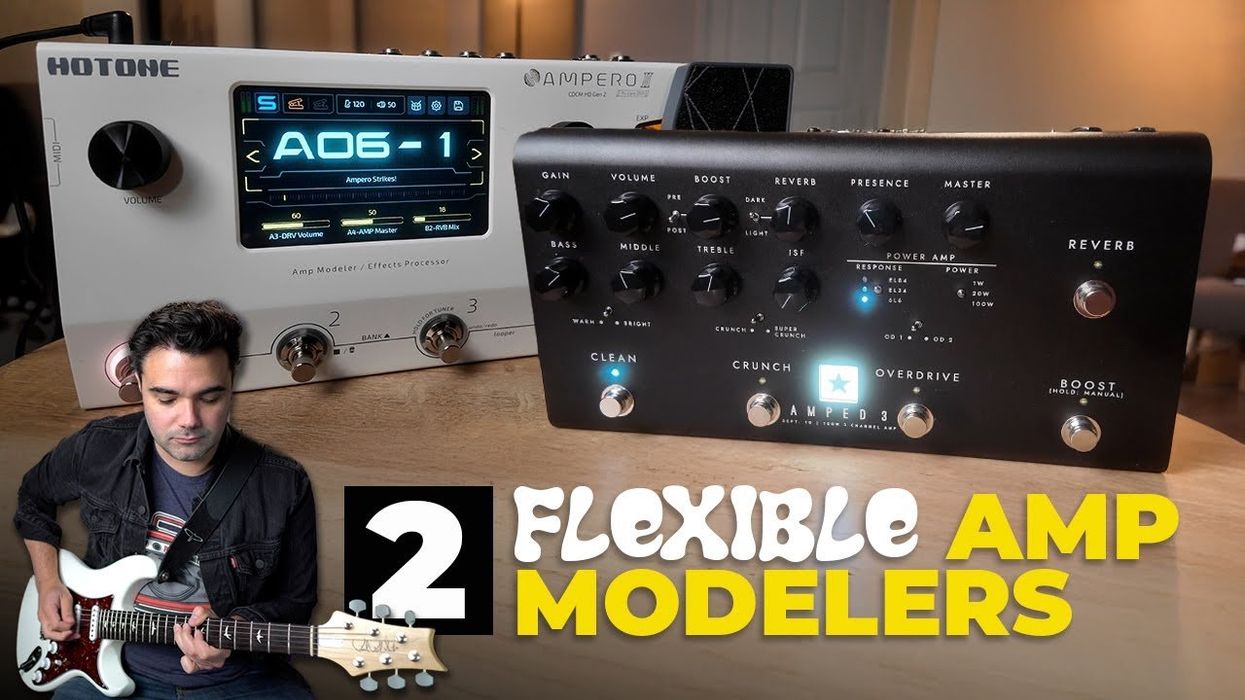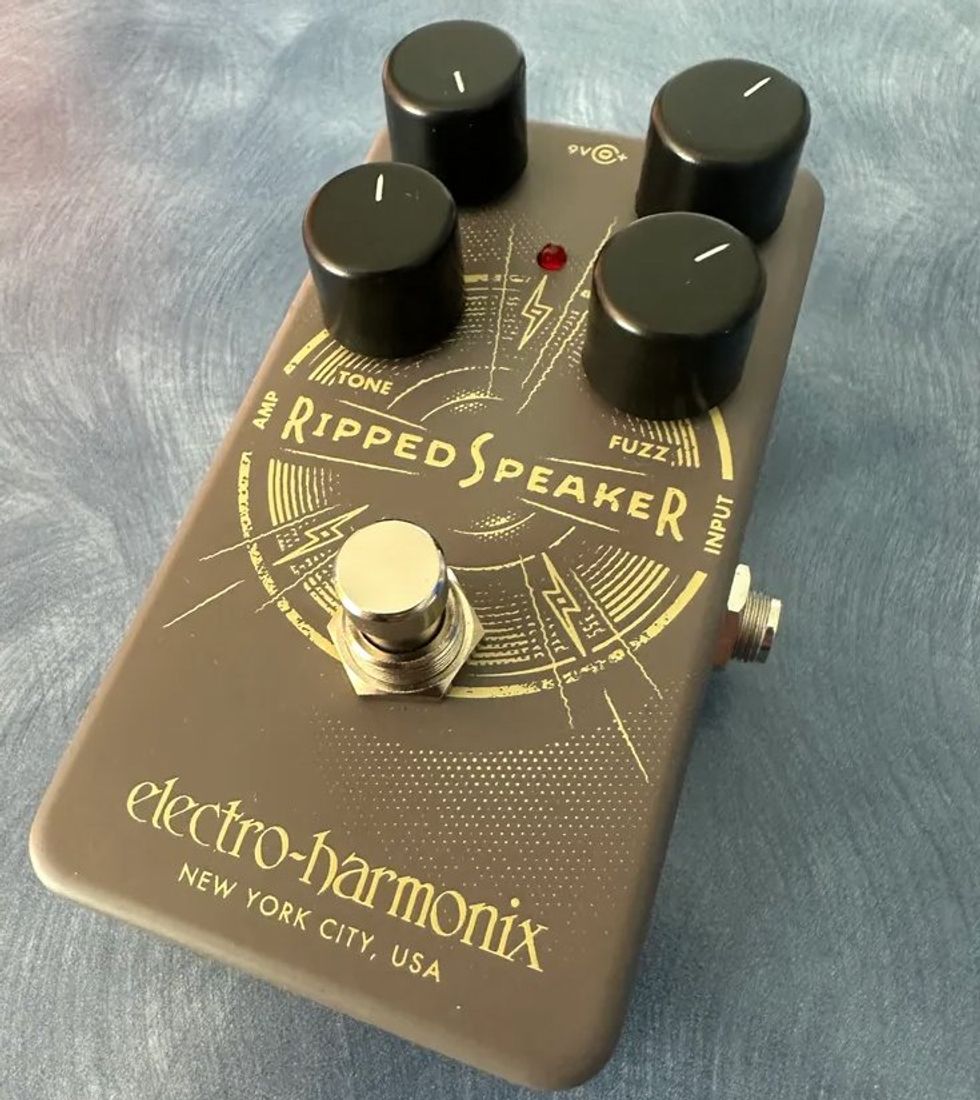Many guitarists marvel at the shimmering
cascades of octave harmonics the late
Lenny Breau wove into his runs and progressions.
Breau took harmonic techniques Chet
Atkins pioneered and expanded them in ways
that left other guitarists shaking their heads
in disbelief. Breau’s technique was spectacular,
matched only by his restless imagination. If
you haven’t heard him yet, drop everything
and search out some YouTube videos—there’s
a wealth of mind-blowing material out there.
(Search for “Lenny Breau harp harmonics.”)
In this lesson, we’ll adapt—and greatly simplify—Breau’s approach, and use it to generate chord voicings that would be difficult or impossible to play with standard guitar technique. The idea is to insert a single octave harmonic into a typical chord form to give it a chimey texture and create intriguing interval clusters that differ from what you’re actually fretting. I call these “sparkle voicings,” but I’m sure they have other (and probably more rigorously academic) names. If you’re new to the concept of playing harmonics on demand, before you go any further check out “Mastering Artificial Harmonics” below.
Ex. 1 illustrates the basic concept. We begin with a standard five-note Am7 (A–G–C–E–A) at the 5th fret. Holding this grip, slowly arpeggiate the chord, starting from low A, as shown. As we cruise across strings 6, 4, 3, and 2 for the first two beats, things are perfectly straightforward. But on beat 3, we return to string 4 and again play the G, but this time as an octave harmonic. In the process, we cancel out the lower G, but with all the other vibrating strings and the arrival of the octave harmonic, the missing low G goes virtually unnoticed. Instead, it sounds as if we’re continuing to sweep through the Am7.

Download audio or listen:
Then, as we press forward to hit A (beat 4), we get the big payoff—a ringing major second composed of the harmonic G and fretted A. This tangy dissonance floats above the still-ringing lower strings.
So that’s the deal: We slip an octave harmonic into a group of fretted tones to extend the chord’s range and create an ear-grabbing close interval. Now, let’s put this technique to use.
In Ex. 2, a diatonic Am7–Gma7–F#m7b5–Em9 progression gets the sparkle treatment. Notice how in this progression, the chords in measures one through three each comprise four fretted notes, yet we’re able to create the illusion that we’re playing five-note voicings, thanks to the extra octave harmonic. And the last chord sounds like a seven-note arpeggio. That’s a cool trick to pull off with a 6-string, wouldn’t you agree?

Download audio or listen:
As you work through this passage, pay attention to dynamics. We want the harmonic, which is inherently quieter than its fretted siblings, to stand with them as a sonic equal. With a little effort, you’ll be able to balance these different timbres.
Now let’s try octave harmonics on the third string (Ex. 3). Again, we’re fretting four-note chords in measures one through three, yet producing what sounds like five-note voicings. And each chord contains a second as the highest interval, courtesy of the additional harmonic. Cmaj7 has a minor second (B–C), Bm7 and Am7 each have a major second (A–B and G–A, respectively), and Gmaj9 has a major second (A–B).

Download audio or listen:
This last chord—Gmaj9—offers an opportunity to engage in a bit of flashy fingering. Some tips: After hitting the open E ("and" of beat 2), hammer the F# and A, then duck back to the 3rd string to hit the harmonic before plucking the A again. As you fret the low G with your thumb, hold all the other notes so they sustain and fade out together. With the harmonic, the voicing spans two octaves plus a major third—wow!
You can use judiciously placed artificial harmonics to spice up riffs too. Ex. 4, a “Secret Agent Man”-inspired turnaround, hints at the possibilities. In this case, the octave harmonics emphasize the chromatic B–C–C# motion on the 5th string, while generating a unison, minor second, and major second against the ringing open B string. As you strike the harmonics, make sure all the remaining strings continue to ring. Play this passage slowly, and strive for clarity and sustain. Some throbbing tremolo wouldn’t hurt.

Download audio or listen:
This sparkle-voicing technique has many applications, and you can modify your approach to fit different musical contexts. For example, instead of plucking the harmonic, you can lightly tap it. This adds a percussive “ping” to the harmonic that’s useful in rock or other rhythmically active genres. Or try using a wah pedal to add a sudden treble bite to the harmonic as you pluck it.
Mastering Artificial Harmonics
With a little practice, you can play any fretted note as an octave harmonic. First, fret a note as usual and hold it. Then, gently touch your picking-hand index finger exactly 12 frets above the note you’re fretting.

Photo by Tedra Walden
 Andy Ellis is a veteran guitar journalist
and Senior Editor at PG. Based
in Nashville, Andy backs singer-songwriters
on the baritone guitar, and also
hosts The Guitar Show, a weekly on-air
and online broadcast. For the schedule,
links to the stations’ streams, archived audio
interviews with inspiring players, and more,
visit theguitarshow.com.
Andy Ellis is a veteran guitar journalist
and Senior Editor at PG. Based
in Nashville, Andy backs singer-songwriters
on the baritone guitar, and also
hosts The Guitar Show, a weekly on-air
and online broadcast. For the schedule,
links to the stations’ streams, archived audio
interviews with inspiring players, and more,
visit theguitarshow.com.
In this lesson, we’ll adapt—and greatly simplify—Breau’s approach, and use it to generate chord voicings that would be difficult or impossible to play with standard guitar technique. The idea is to insert a single octave harmonic into a typical chord form to give it a chimey texture and create intriguing interval clusters that differ from what you’re actually fretting. I call these “sparkle voicings,” but I’m sure they have other (and probably more rigorously academic) names. If you’re new to the concept of playing harmonics on demand, before you go any further check out “Mastering Artificial Harmonics” below.
Ex. 1 illustrates the basic concept. We begin with a standard five-note Am7 (A–G–C–E–A) at the 5th fret. Holding this grip, slowly arpeggiate the chord, starting from low A, as shown. As we cruise across strings 6, 4, 3, and 2 for the first two beats, things are perfectly straightforward. But on beat 3, we return to string 4 and again play the G, but this time as an octave harmonic. In the process, we cancel out the lower G, but with all the other vibrating strings and the arrival of the octave harmonic, the missing low G goes virtually unnoticed. Instead, it sounds as if we’re continuing to sweep through the Am7.

Download audio or listen:
Then, as we press forward to hit A (beat 4), we get the big payoff—a ringing major second composed of the harmonic G and fretted A. This tangy dissonance floats above the still-ringing lower strings.
So that’s the deal: We slip an octave harmonic into a group of fretted tones to extend the chord’s range and create an ear-grabbing close interval. Now, let’s put this technique to use.
In Ex. 2, a diatonic Am7–Gma7–F#m7b5–Em9 progression gets the sparkle treatment. Notice how in this progression, the chords in measures one through three each comprise four fretted notes, yet we’re able to create the illusion that we’re playing five-note voicings, thanks to the extra octave harmonic. And the last chord sounds like a seven-note arpeggio. That’s a cool trick to pull off with a 6-string, wouldn’t you agree?

Download audio or listen:
As you work through this passage, pay attention to dynamics. We want the harmonic, which is inherently quieter than its fretted siblings, to stand with them as a sonic equal. With a little effort, you’ll be able to balance these different timbres.
Now let’s try octave harmonics on the third string (Ex. 3). Again, we’re fretting four-note chords in measures one through three, yet producing what sounds like five-note voicings. And each chord contains a second as the highest interval, courtesy of the additional harmonic. Cmaj7 has a minor second (B–C), Bm7 and Am7 each have a major second (A–B and G–A, respectively), and Gmaj9 has a major second (A–B).

Download audio or listen:
This last chord—Gmaj9—offers an opportunity to engage in a bit of flashy fingering. Some tips: After hitting the open E ("and" of beat 2), hammer the F# and A, then duck back to the 3rd string to hit the harmonic before plucking the A again. As you fret the low G with your thumb, hold all the other notes so they sustain and fade out together. With the harmonic, the voicing spans two octaves plus a major third—wow!
You can use judiciously placed artificial harmonics to spice up riffs too. Ex. 4, a “Secret Agent Man”-inspired turnaround, hints at the possibilities. In this case, the octave harmonics emphasize the chromatic B–C–C# motion on the 5th string, while generating a unison, minor second, and major second against the ringing open B string. As you strike the harmonics, make sure all the remaining strings continue to ring. Play this passage slowly, and strive for clarity and sustain. Some throbbing tremolo wouldn’t hurt.

Download audio or listen:
This sparkle-voicing technique has many applications, and you can modify your approach to fit different musical contexts. For example, instead of plucking the harmonic, you can lightly tap it. This adds a percussive “ping” to the harmonic that’s useful in rock or other rhythmically active genres. Or try using a wah pedal to add a sudden treble bite to the harmonic as you pluck it.
Mastering Artificial Harmonics
With a little practice, you can play any fretted note as an octave harmonic. First, fret a note as usual and hold it. Then, gently touch your picking-hand index finger exactly 12 frets above the note you’re fretting.
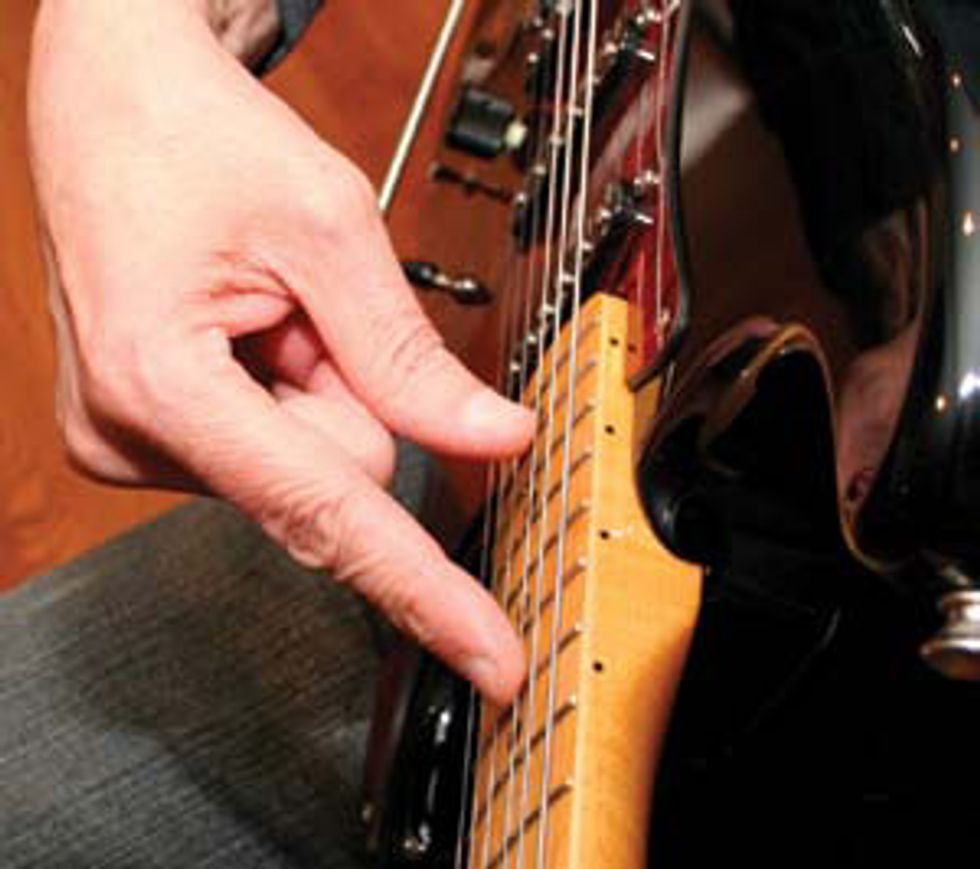
Photo by Tedra Walden
 Andy Ellis is a veteran guitar journalist
and Senior Editor at PG. Based
in Nashville, Andy backs singer-songwriters
on the baritone guitar, and also
hosts The Guitar Show, a weekly on-air
and online broadcast. For the schedule,
links to the stations’ streams, archived audio
interviews with inspiring players, and more,
visit theguitarshow.com.
Andy Ellis is a veteran guitar journalist
and Senior Editor at PG. Based
in Nashville, Andy backs singer-songwriters
on the baritone guitar, and also
hosts The Guitar Show, a weekly on-air
and online broadcast. For the schedule,
links to the stations’ streams, archived audio
interviews with inspiring players, and more,
visit theguitarshow.com.

